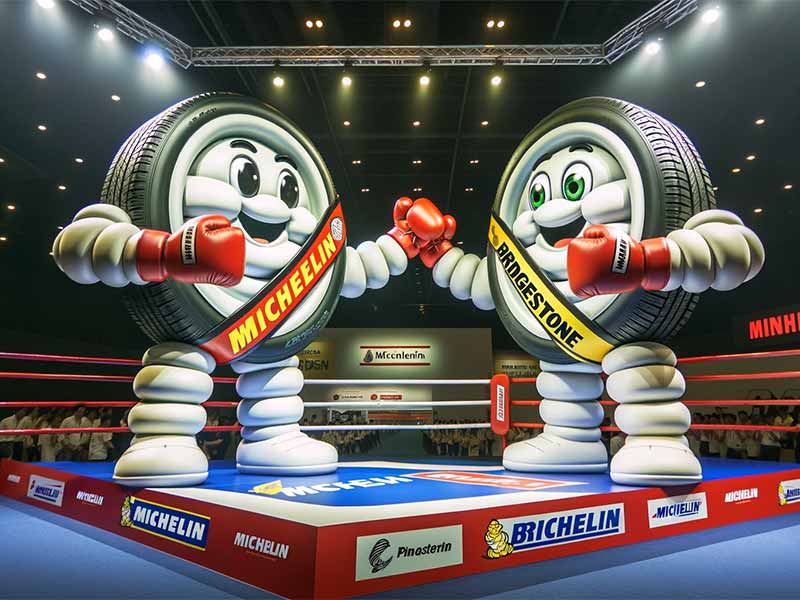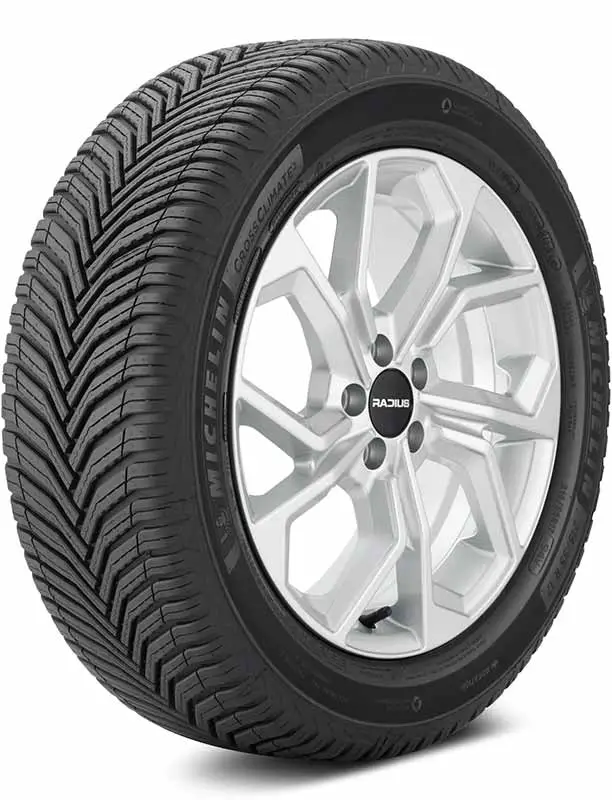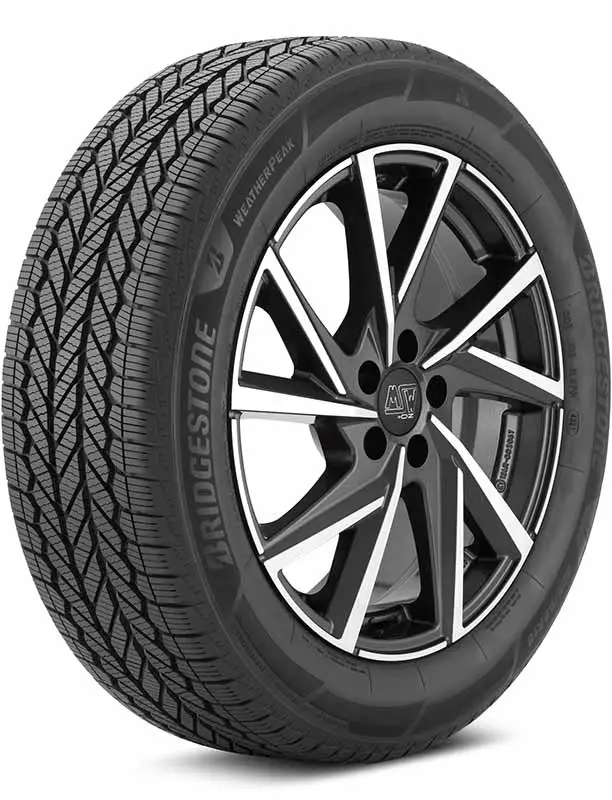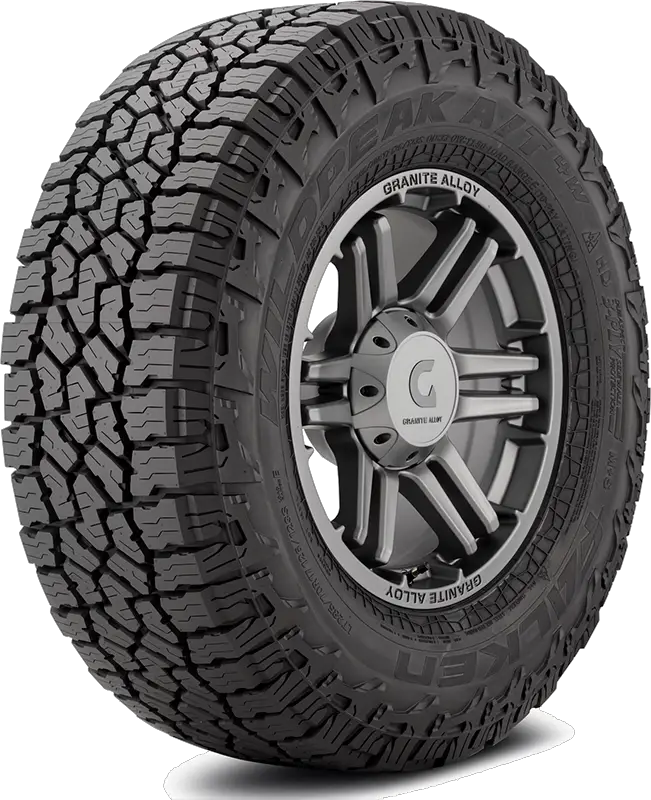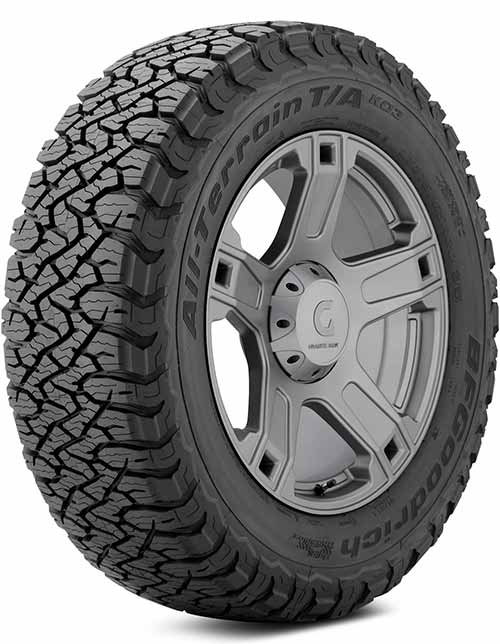Both Michelin and Bridgestone command premium status in the tire industry and compete head-to-head in nearly every category. Sometimes the brand with the higher price tag truly delivers greater benefits, while at other times, the more affordable option can outshine expectations.
Key Takeaways
- Michelin’s Strengths: Known for long tread life, a refined ride quality, and pioneering technology.
- Michelin’s Weaknesses: Premium price tags may deter budget-minded buyers.
- Bridgestone’s Strengths: Offers a wide product range, strong grip, and often more competitive pricing.
- Bridgestone’s Weaknesses: Some models fall short in overall longevity and comfort compared to Michelin.
In this article, we’ll explore how these two global tire giants truly stack up. We’ll compare their top all-season offerings side-by-side, highlight the strengths and weaknesses of each brand, and reveal where you can find the best value, whether you’re focused on price, performance, or durability. By the end, you’ll know exactly which tire brand aligns with your driving needs and budget.

Michelin: Quality & Features
Michelin has long been praised for producing tires that strike an excellent balance between performance, safety, and durability. Their focus on research and development—combined with rigorous in-house testing—often results in notable strengths such as:
- Long Tread Life: Michelin’s specialized rubber compounds and tread patterns are designed to resist premature wear.
- Fuel Efficiency: Many Michelin tires incorporate low rolling-resistance technology, which can help improve gas mileage.
- Comfort and Noise Control: Michelin pays close attention to ride quality and noise levels, making its tires a popular choice for those who value a smooth, quiet drive.
Reviews and professional tests frequently place Michelin at or near the top in various categories, suggesting that the brand’s premium status is more than just marketing—it’s a reflection of consistent, high-quality performance.
Why Is Michelin So Expensive?
Michelin’s higher price tags can be attributed to several factors:
- Advanced R&D: Developing new compounds and tread designs requires significant investments in time, technology, and testing.
- Premium Materials: Michelin often uses proprietary rubber formulations that deliver better grip, tread life, and fuel efficiency.
- Brand Legacy: Decades of motorsport involvement, high satisfaction ratings, and ongoing innovations reinforce Michelin’s reputation, allowing them to command premium pricing.
These factors combine to create a tire that is typically reliable, long-lasting, and high performing. For many consumers, this translates to better long-term value—especially if the tire’s extended lifespan means fewer replacements over time.
Weaknesses of Michelin
Even industry leaders have areas where they might fall short:
- Cost: The most common drawback is the premium price, which can be prohibitive for budget-conscious drivers.
- Availability: Michelin’s popular models can occasionally be out of stock or backordered, especially during peak seasons.
- Niche Performance: While Michelin offers strong all-around performance, certain specialized competitors (e.g., ultra-high-performance summer or extreme winter tires) might outperform equivalent Michelin models in very specific conditions.
Despite these potential downsides, Michelin remains one of the strongest brands for drivers seeking consistent, top-tier quality in a wide range of applications.

Bridgestone: Quality & Features
Bridgestone has established itself as one of the world’s premier tire manufacturers, thanks in large part to a dedication to research and development, consistent innovation, and performance-driven engineering. Key aspects of Bridgestone’s quality include:
- Strong Wet and Dry Grip: Many of Bridgestone’s passenger and performance tires are lauded for excellent traction in various road conditions.
- Wide Product Range: Bridgestone caters to diverse vehicles—from compact cars and SUVs to commercial trucks—ensuring a suitable match for different driving styles.
- Motorsport-Driven Tech: Ongoing motorsport involvement has led to advanced compounds and tread designs, refining traction, durability, and safety.
Professional tests often rate Bridgestone models at or near the top for handling and reliability, indicating that the brand consistently delivers high-quality products across multiple segments.
Why Is Bridgestone So Expensive?
Like Michelin, Bridgestone’s premium pricing often reflects:
- Heavy R&D Investment: Bridgestone continuously refines rubber compounds, tread designs, and engineering processes, translating motorsport success into everyday benefits.
- Global Presence: Operating at a massive scale, Bridgestone upholds strict quality control and logistical capabilities that ensure consistent product standards worldwide.
- Brand Legacy: Decades of proven performance, advanced tire technology, and high safety ratings allow Bridgestone to position itself as a premium brand.
For drivers who value reliable grip, balanced performance, and extended tread life, the upfront cost can be offset by fewer replacements and better overall driving confidence.
Weaknesses of Bridgestone
Although Bridgestone is a renowned tire manufacturer, potential downsides include:
- Premium Cost: Similar to Michelin, Bridgestone’s prices can exceed those of other competitors, challenging drivers on tighter budgets.
- Model-Specific Variations: Some Bridgestone lines prioritize grip over ride comfort or tread life, meaning not all models will excel across every metric.
- Less Specialization in Certain Segments: While Bridgestone covers many categories well, ultra-specific markets (e.g., hardcore off-road or track-focused tires) might find better options among niche competitors.
Overall, Bridgestone continues to be a dependable choice for motorists who want a balance of performance, reliability, and wide model availability.

Michelin CrossClimate2 vs. Bridgestone WeatherPeak
In this section, we’ll compare two premier all-season contenders: Michelin’s CrossClimate2 and Bridgestone’s WeatherPeak. Both are designed to excel year-round, but their real-world strengths (and minor weaknesses) become evident when you look at the finer details.
Price Comparison
| Tire | Price Category |
|---|---|
| Michelin CrossClimate2 | Premium |
| Bridgestone WeatherPeak | Premium |
Wet Performance
| Tire | Hydroplaning Resistance | Wet Traction |
|---|---|---|
| Michelin CrossClimate2 | 9.4 | 9.4 |
| Bridgestone WeatherPeak | 9.1 | 9.1 |
Dry Performance
| Tire | Corner Stability | Dry Traction | Steering Response |
|---|---|---|---|
| Michelin CrossClimate2 | 9.4 | 9.5 | 9.3 |
| Bridgestone WeatherPeak | 9.0 | 9.3 | 9.0 |
Winter/Snow Performance
| Tire | Light Snow Traction | Deep Snow Traction | Ice Traction |
|---|---|---|---|
| Michelin CrossClimate2 | 9.2 | 8.8 | 8.5 |
| Bridgestone WeatherPeak | 9.1 | 8.7 | 8.3 |
Comfort Performance
| Tire | Ride Quality | Noise |
|---|---|---|
| Michelin CrossClimate2 | 9.2 | 8.6 |
| Bridgestone WeatherPeak | 8.9 | 8.5 |
Treadwear Performance
| Tire | Treadwear |
|---|---|
| Michelin CrossClimate2 | 9.1 |
| Bridgestone WeatherPeak | 8.2 |
Michelin CrossClimate 2
Customer Rating
Overall Rating
9.0 of 10
Wet Weather
9.2 of 10
Winter Weather
8.3 of 10
Treadwear
9.0 of 10
Dry Weather
9.4 of 10
Ride Comfort
8.8 of 10
UTQG
Uniform Tire Quality Grade
UTQG Treadwear Rating: 640
UTQG Traction Rating: B
UTQG Temperature Rating: A
Mileage Warranty
6 Years / 60,000 Miles
Find The Best Price
Key Performance Metrics
Hydroplaning: 9.0 of 10
Wet Grip: 9.2 of 10
Cornering: 9.2 of 10
Dry Grip: 9.4 of 10
Responsiveness: 9.0 of 10
Mild Snow Grip: 8.3 of 10
Heavy Snow Grip: 7.6 of 10
Ice Grip: 7.4 of 10
Comfort Level: 8.9 of 10
Road Noise: 8.8 of 10
Bridgestone WeatherPeak
Customer Rating
Overall Rating
8.7 of 10
Wet Weather
9.1 of 10
Winter Weather
8.7 of 10
Treadwear
8.2 of 10
Dry Weather
9.1 of 10
Ride Comfort
8.7 of 10
UTQG
Uniform Tire Quality Grade
UTQG Treadwear Rating: 700
UTQG Traction Rating: A
UTQG Temperature Rating: A
Mileage Warranty
5 Years / 70,000 Miles
Find The Best Price
Key Performance Metrics
Hydroplaning: 9.1 of 10
Wet Grip: 9.1 of 10
Cornering: 9.0 of 10
Dry Grip: 9.3 of 10
Responsiveness: 9.0 of 10
Mild Snow Grip: 9.1 of 10
Heavy Snow Grip: 8.7 of 10
Ice Grip: 8.3 of 10
Comfort Level: 8.9 of 10
Road Noise: 8.5 of 10
- Michelin CrossClimate2:
- Strengths: Standout wet and dry traction, great tread life, and a comfortable ride.
- Potential Trade-offs: Higher upfront cost.
- Bridgestone WeatherPeak:
- Strengths: Competitive price point, solid all-around performance, and excellent wet grip.
- Potential Trade-offs: Slightly lower treadwear score and marginally less refined ride in some conditions.
If you want the pinnacle of all-season versatility and don’t mind paying a bit more, the Michelin CrossClimate2 is tough to beat. However, the Bridgestone WeatherPeak remains a compelling, often more affordable alternative that offers well-rounded performance across varied road conditions.
Other Head-2-Head Models
Michelin Defender T+H vs. Bridgestone Turanza QuietTrack
- Touring All-Season Focus: Both are designed for everyday drivers who value a comfortable ride and extended tread life.
- Key Features:
- Defender T+H: Known for reliable treadwear warranties and stable performance in wet and dry conditions.
- Turanza QuietTrack: Emphasizes noise reduction and ride comfort, making it a favorite among commuters seeking a serene driving experience.
Michelin Pilot Series vs. Bridgestone Potenza Series
- High-Performance Lineups: Ideal for sports cars, performance sedans, and drivers who crave responsive handling at higher speeds.
- Key Features:
- Pilot Series (e.g., Pilot Sport 4S): Celebrated for precise steering response, cornering grip, and overall versatility in wet and dry conditions.
- Potenza Series (e.g., Potenza Sport): Delivers strong traction and handling dynamics, bridging the gap between daily usability and spirited driving potential.
Michelin LTX vs. Bridgestone Dueler
- SUV and Truck Solutions: Both cater to a variety of crossovers, SUVs, and light trucks, offering models suited for highway driving or light off-road use.
- Key Features:
- Michelin LTX: Renowned for long tread life, a stable highway ride, and robust construction for towing or heavier loads.
- Bridgestone Dueler: Offers diverse options (e.g., all-terrain, highway, and touring) to cover different driving needs, with solid grip in wet conditions and decent off-pavement capability in select models.
Each pair of models addresses a distinct set of driving priorities. By recognizing which traits matter most—be it comfort, performance, or off-road readiness—you can zero in on the tire model that aligns perfectly with your vehicle and lifestyle.
Resources
Below are some links you may find helpful when learning about tires:
- Testing grand touring all-season tires – Tire Rack
- Bridgestone vs Michelin: Which tire brand is better? – Car From Japan
Final Thoughts
Michelin stands out for its long tread life, cutting-edge technology, and exceptionally refined ride quality. While the higher price tag can be a drawback, many drivers find the long-term value worth the initial investment.
Bridgestone offers a wide range of tire models at slightly more competitive prices, often matching Michelin’s performance in wet traction and overall reliability. However, certain models may not match Michelin’s longevity or quiet ride.
Both Michelin and Bridgestone have earned their places at the top of the tire industry. Deciding which is “better” ultimately depends on personal needs like climate, driving style, and budget. Michelin may be the choice for those who prize extended tread life and class-leading comfort, whereas Bridgestone is often the go-to for balanced performance at a somewhat lower cost.
- Evaluate Driving Priorities: Determine whether tread longevity, cost, winter performance, or noise reduction is your main focus.
- Compare Specific Models: Even within the same brand, different tire lines cater to different needs. Check warranties, user reviews, and official performance metrics to find the best match.
Good luck and happy motoring.
